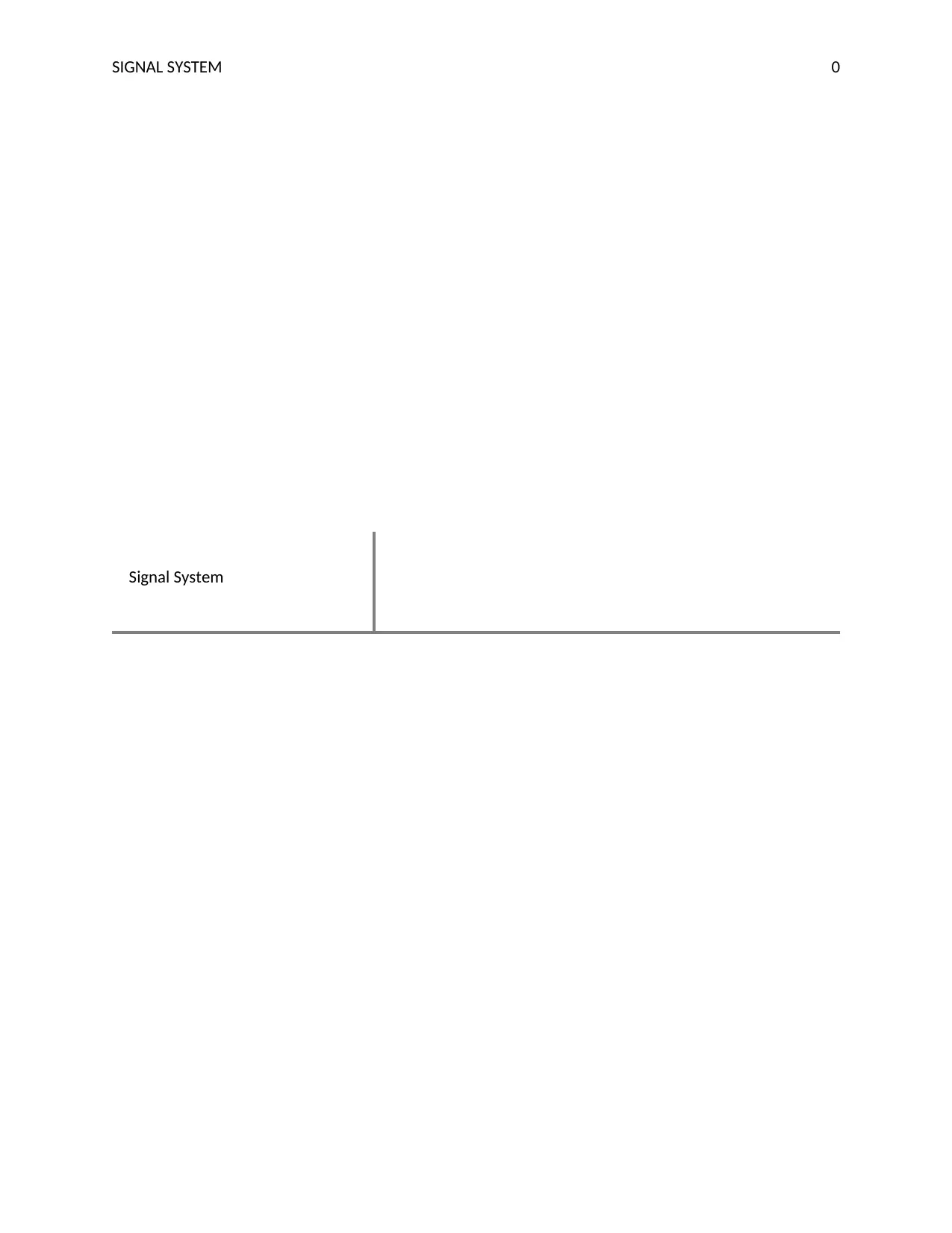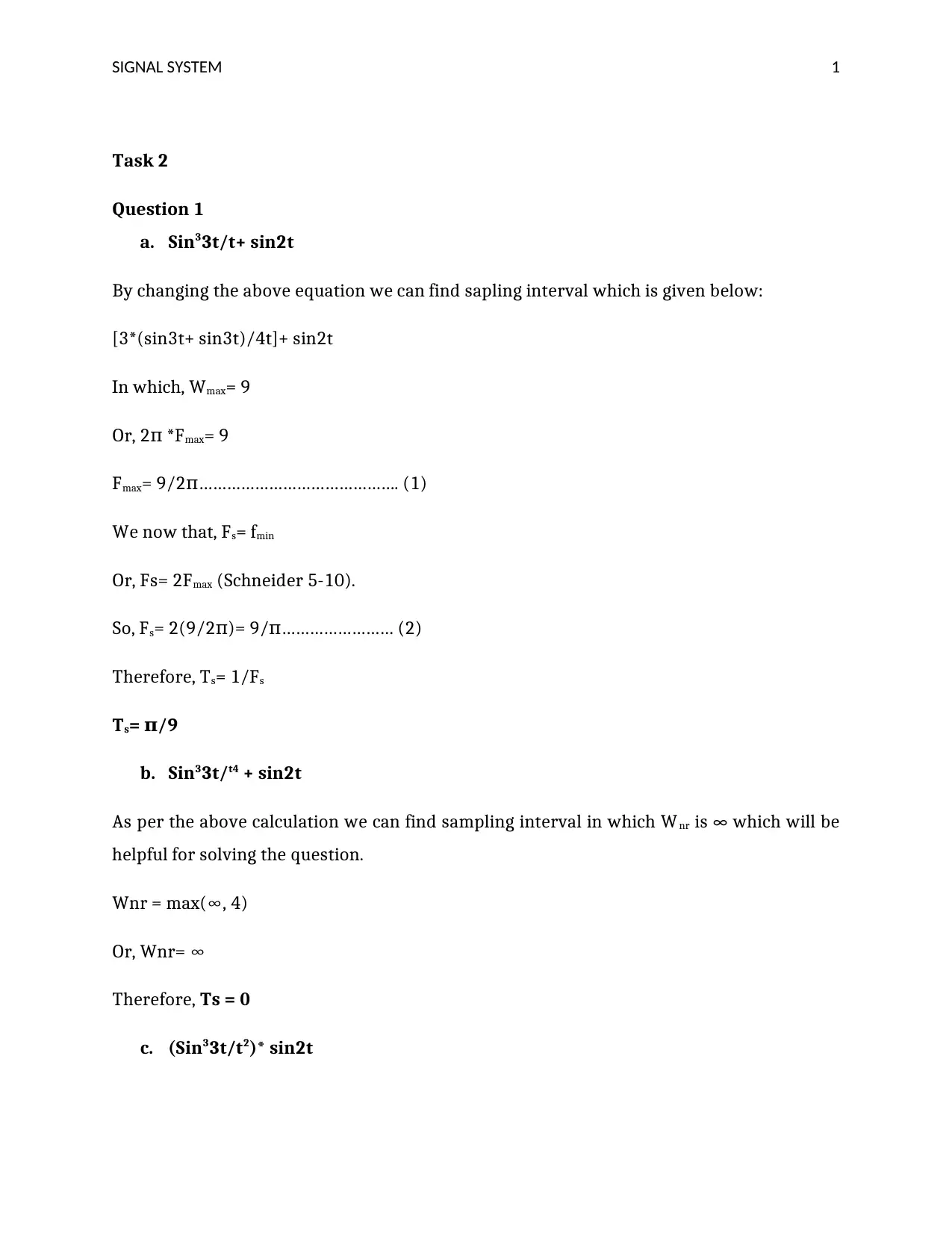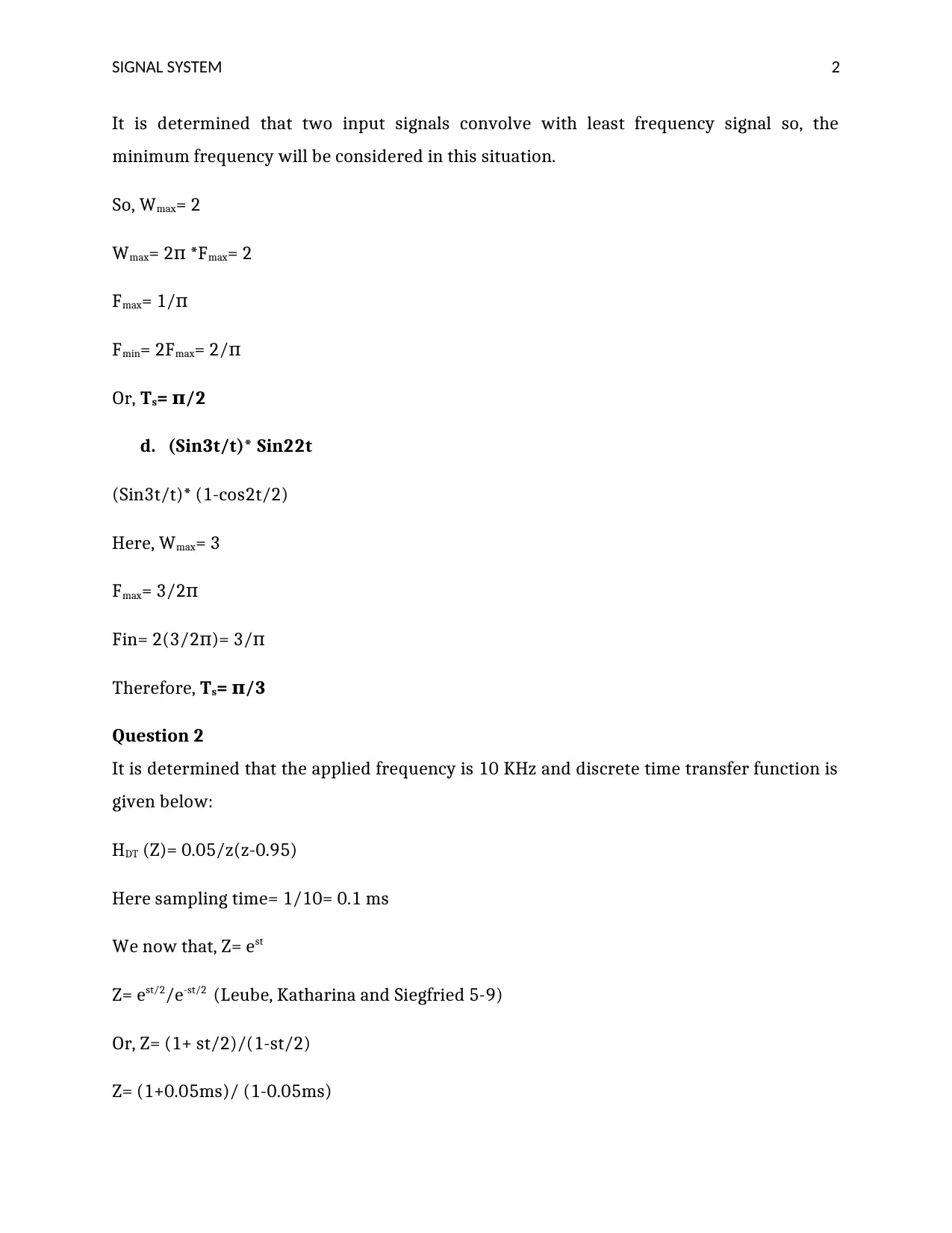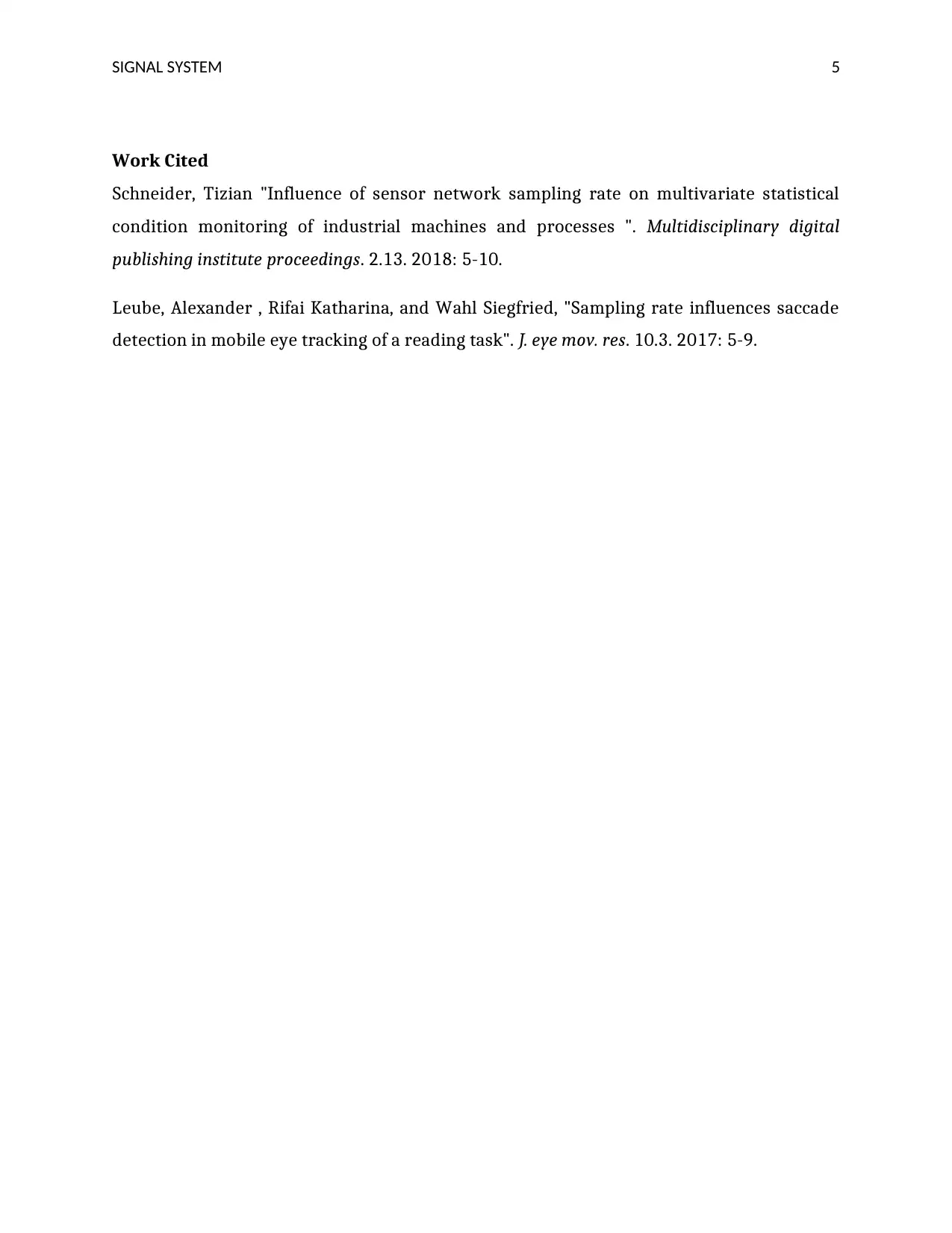Signal System Task 2 Assignment Solution and Analysis Report
VerifiedAdded on 2022/08/13
|6
|801
|13
Homework Assignment
AI Summary
This document presents a detailed solution to a Signal System Task 2 assignment. The solution addresses four problems related to signal processing. Problem 1 focuses on estimating the largest sampling interval for perfect signal reconstruction, considering different signal equations. Problem 2 involves determining the continuous-time (CT) filter approximated by a discrete-time (DT) system and finding an appropriate cutoff frequency for the Anti-Aliasing Filter (AAF). Problem 3 requires determining the sampling frequency when a signal cos(1000t) is sampled, resulting in cos(100t). Problem 4 analyzes the feasibility of sampling a vibration signal with a limited sampling rate, defines the cutoff frequency of an ideal AAF, and determines the order of the required filter. The solution utilizes formulas and calculations to arrive at the final answers, referencing key concepts in signal processing.
1 out of 6











![[object Object]](/_next/static/media/star-bottom.7253800d.svg)